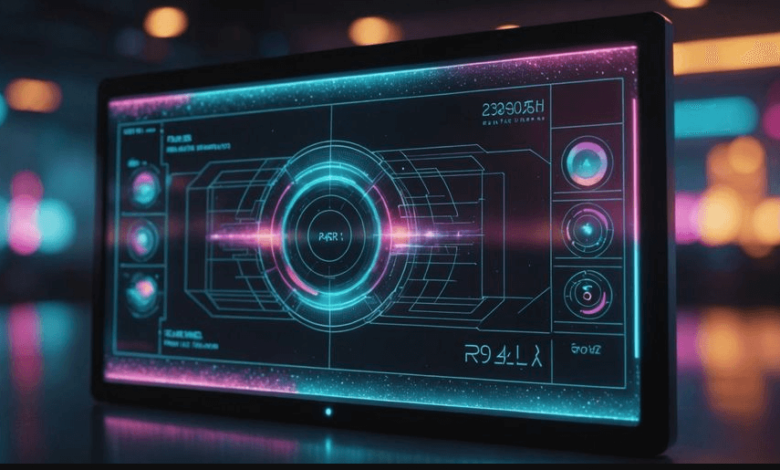Exploring the Advancements and Applications of Small OLED Technology

Introduction
Display technology has rapidly evolved in recent decades, moving from bulky cathode ray tubes to slim LED and OLED screens. Among these innovations, small oled panels have emerged as a transformative component in various industries. Their compact size, superior image quality, and energy efficiency make them ideal for a wide range of applications, from wearable devices to medical instruments. This article explores the working principle, benefits, challenges, and future potential of small oled displays.
Understanding Small OLED Technology
OLED, short for Organic Light Emitting Diode, is a display technology that uses organic compounds to emit light when an electric current passes through them. Unlike traditional LED displays, OLED panels do not require a backlight because each pixel generates its own light. This feature allows for thinner and lighter displays with improved contrast and flexibility. A small oled display refers to compact-sized panels that are typically used in devices requiring portable and space-efficient screens.
Key Features of Small OLED Displays
Small oled screens are designed with unique features that distinguish them from other display technologies:
- High Contrast Ratio – Each pixel can turn completely off, resulting in deep blacks and vibrant colors.
- Wide Viewing Angles – Colors remain accurate even when viewed from sharp angles.
- Lightweight Design – The absence of a backlight allows for ultra-thin panels.
- Energy Efficiency – Less power is consumed, particularly when displaying darker images.
- Flexibility – Small oled panels can be made bendable or curved, enabling innovative designs.
See also: AI Story Writer: Creating Imaginative Stories with the Help of Technology
Applications in Consumer Electronics
One of the most common uses of small oled displays is in consumer electronics. They are widely used in:
- Smartwatches and Fitness Trackers – Compact displays that offer bright visuals even under sunlight.
- Smartphones – Many premium smartphones use small oled screens for enhanced image quality.
- Portable Gaming Devices – Clear and vivid displays improve the gaming experience.
- Cameras – Viewfinders and status screens benefit from sharp and energy-efficient displays.
Role in Medical and Industrial Equipment
Small oled technology is not limited to entertainment and personal gadgets. It is increasingly being integrated into professional and industrial fields:
- Medical Devices – Used in portable diagnostic tools and wearable health monitors for accurate readings.
- Industrial Instruments – Provide clear readouts on equipment used in laboratories and factories.
- Military and Aviation – Lightweight displays are applied in control panels and specialized instruments.
Advantages Over Other Display Technologies
When compared to LCDs and traditional LEDs, small oled panels offer several advantages:
- Better Color Accuracy – Superior reproduction of colors for realistic visuals.
- Thinner Design – Enables slimmer devices that are easier to carry.
- Lower Power Consumption – Important for battery-powered devices.
- Enhanced Durability – Flexible oleds reduce the risk of screen damage in rugged environments.
Challenges in Adoption
Despite their benefits, small oled displays face certain limitations:
- Higher Cost – Production is still more expensive than traditional LCD technology.
- Limited Lifespan – Blue OLED materials tend to degrade faster than red or green ones.
- Risk of Burn-in – Prolonged display of static images can leave permanent marks on the screen.
- Manufacturing Complexity – Requires advanced equipment and strict quality control.
Innovations Driving Future Growth
Research and development small oled continue to address the challenges of small oled technology. Some recent innovations include:
- Improved Materials – Scientists are working on more durable organic compounds with longer lifespans.
- Flexible and Foldable Designs – Expanding the usability in wearable and foldable devices.
- Higher Resolutions – Small oled panels are now available in Full HD and even 4K resolutions.
- Integration with AI and IoT – Displays are being designed to seamlessly connect with smart systems.
Market Trends and Future Outlook
The demand for small oled displays is projected to grow significantly in the coming years. With the rising popularity of wearable devices, augmented reality tools, and portable medical devices, manufacturers are investing heavily in expanding production. As costs decrease and durability improves, small oled technology is likely to become more mainstream, replacing older display types in multiple industries.
Conclusion
Small oled displays have redefined how compact electronic devices present information. Their lightweight structure, superior visuals, and adaptability make them an essential part of modern technology. While challenges such as cost and lifespan remain, continuous innovation promises to overcome these hurdles. Looking ahead, small oled screens will play an even greater role in shaping the future of electronics, healthcare, and industrial applications.




